
The Hotel Kirkwood, also known as the Kirkwood Civic Center Hotel, is a historic building located in downtown Des Moines, Iowa, United States. The building was designed by the Chicago architectural firm of H.L. Stevens & Company and built in 1930. With its completion it became the largest hotel along Fourth Street between Walnut Street and Court Avenue, along Des Moines' "Hotel Row." It also marked the emergence of the skyscraper hotel in the downtown area. The new hotel replaced a previous Hotel Kirkwood that had been built on the same location in 1862. It was located near Union Station and the Rock Island Depot. Developers and owners of the 1930 Hotel Kirkwood were E.F. Tagney and S.F. McGinn. Art Deco details are found in the building's massing, the sleek exterior geometrical detailing, and treatment of the cornice. The 12-story brick structure rises to a height of 133 feet (41 m). It is listed on the National Register of Historic Places in 2003. The building has subsequently been converted into an apartment building called "The Kirkwood."

The Younker Brothers Department Store is a historic building located in downtown Des Moines, Iowa, United States. It was listed on the National Register of Historic Places in 2010.

The Baker-Devotie-Hollingsworth Block is an historic building located in the East Village of Des Moines, Iowa, United States. The eastern two-thirds of the block was listed on the National Register of Historic Places in 1978 as the Studio Building. The western one-third was added to the National Register in 2008, and its name was changed at that time. In 2019 the entire building was included as a contributing property in the East Des Moines Commercial Historic District.

The Prospect Park Second Plat Historic District is a nationally recognized historic district located in the north-central section of Des Moines, Iowa, United States. The residential area contained middle to upper class housing that was developed in the late 19th and early 20th centuries in the suburb of North Des Moines. It has been listed on the National Register of Historic Places since 1998. It is part of the Towards a Greater Des Moines MPS.

The Sherman Hill Historic District is located in Des Moines, Iowa, United States. It is one of the oldest residential suburbs in Des Moines. Single-family houses were constructed beginning around 1880 and multi-family dwellings were built between 1900 and 1920. The district encompasses 80 acres (0.32 km2) and 210 buildings and is bounded by 15th Street to the East, High Street to the South, Martin Luther King Parkway on the West, and School Street to the North. The historic district has been listed on the National Register of Historic Places since 1979.

The West Ninth Streetcar Line Historic District is located in the north-central section of Des Moines, Iowa, United States. The focus of the district is West Ninth Street from University Avenue on the south to Hickman Road on the north, which had a street car line that ran on it. It has been listed on the National Register of Historic Places since 1998. It is part of the Towards a Greater Des Moines MPS.

The Ayrshire Apartments is a historic building located in Des Moines, Iowa, United States. It was built in 1920 as a fireproof apartment hotel. The three-story building was designed in the Tudor Revival style, represented by the half-timbering on the third floor. All 36 units include a kitchenette, a Murphy bed in the living room, and a built-in clothes closet. The end units on each floor are larger than the interior units and they include a solarium. The building is located on Sixth Avenue, which by the turn of the 20th century had become a major route utilized by vehicular traffic and streetcar lines. Its proximity to this transportation corridor illustrates the emergence of higher and denser residential use in these areas of Des Moines. The apartment building was listed on the National Register of Historic Places in 1996 as a part of the Towards a Greater Des Moines MPS.
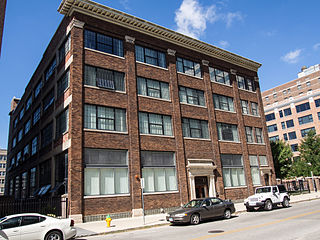
The Standard Glass and Paint Company Building, also known as 10th Street Lofts, is an historic building located in downtown Des Moines, Iowa, United States. Ashton and Ross Clemens, who were brothers, had the building built in 1913 to house their company, which was said to be the largest glass and paint business west of Chicago. Local contractor J.E. Lovejoy was responsible for its construction. It was one of several warehouse buildings on the southwest corner of the downtown area. Established by the Clemens brothers, Standard Glass and Paint Company was in existence from 1903 to 1979. It was Des Moines' leading wholesale and retail supplier of a variety of building and remodeling supplies. The company remained in this building until the mid-1920s when they moved to the Clemens Automobile Company Building, which was owned by the same family. After it sat empty until 1931 various wholesale companies occupied this building over the succeeding years. Along with the neighboring Herring Motor Car Company Building it has been converted into loft apartments. It was listed on the National Register of Historic Places in 2004.

The National Biscuit Company Building, also known as National Biscuit Company Flats, is an historic building located in downtown Des Moines, Iowa, United States. The heavy timber and masonry building was built in 1906. Only half of the planned building was completed, and the north half of the property was later sold. It initially served as a production and distribution facility for the National Biscuit Company. Architect William F. Wilmouth, who designed the company's buildings is presumed to be the architect of this four-story Neoclassical building. Benson & Marxer served as the contractors. Des Moines was the third largest sales territory for the company. It was one of a few bakeries in the company that produced the Uneeda Biscuit, and it was one of three that produced a corn cracker in the mid-1920s.

The Lexington, also known as Lexington Apartments, is a historic building located in Des Moines, Iowa, United States. The five-story brick structure on a raised basement was completed in 1908 as the city's first high-rise apartment building. It was designed and built by local architect-builder Fred Weitz. The exterior features a Colonial Revival style entrance with a recessed door, arched fanlight, and engaged Doric style columns that support the pediment. Wrought iron balconies are located on the two floors above the entrance. On the interior there are two apartments on every floor, and they originally featured servant's quarters. They have subsequently been converted into other purposes. The upper floors are served by a large, open-cage brass elevator. The building purportedly had paranormal activity involving its elevator. It was renovated between 2012 and 2014. It was individually listed on the National Register of Historic Places in 1976. The building was included as a contributing property in the Sherman Hill Historic District in 1979. It is currently owned by the Allen Family Trust.

The Hallett Flats–Rawson & Co. Apartment Building at 1301–1307 Locust St. in Des Moines, Iowa is a pair of abutting buildings. The Hallett Flats building, at 1305–1307 Locust St., is a three-story building designed by architect George E. Hallett and was built in 1904. It has also been known as Hallett Apartments. The Rawson & Co. Apartment Building, a four-story building designed by Proudfoot, Bird and Rawson, was built in 1915 in such a way that the two would function as one building. It has also been known as Arlington Apartments. The combination was listed on the National Register of Historic Places in 2000. The listing included two contributing buildings and one other contributing structure.
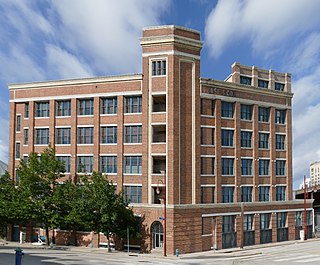
The National Biscuit Company Building, located at 15 North Chenevert in Houston, Texas, was built for Nabisco in 1910, and listed on the National Register of Historic Places on February 20, 1998. The structure was converted to apartments and is now known as City View Lofts.

The C.H. Baker Double House, also known as the Indiana Apartments, The Manor, and The Manor House, is an historic building located in Des Moines, Iowa, United States. Built from 1901 to 1902, it is a two-story structure that features balloon frame construction with brick veneer. It was designed in the Colonial Revival style by the Des Moines architectural firm of Smith & Gutterson. Its significance is attributed to its location on the Sixth Avenue streetcar route "to capitalize on the appeal of public transportation." It was one of the first multiple-family rental properties along the avenue, and it was built for upper-middle class occupancy. It was part of the movement toward denser residential use in this area of the city. The house was listed on the National Register of Historic Places in 1996.
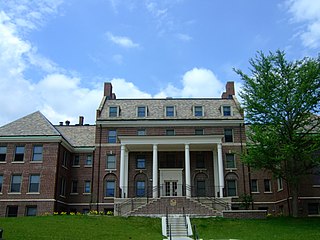
The Methodist Deaconess Institute—Esther Hall, also known as Hawthorn Hill Apartments, is a historic building located in Des Moines, Iowa, United States. This building has been known by a variety of titles. They include the Bible Training School, Women's Foreign Missionary Society; Women's Home Missionary Society-Bible Training School; Iowa National Bible Training School; Iowa National Esther Hall & Bidwell Deaconess Home; Hawthorn Hill; and Chestnut Hill. The Women's Home Missionary Society of the Methodist Episcopal Church established a Des Moines affiliate in 1896. Part of their responsibilities was to oversee the work of deaconesses of the church. At about the same time a Bible training school was established at Iowa Methodist Hospital's School of Nursing.
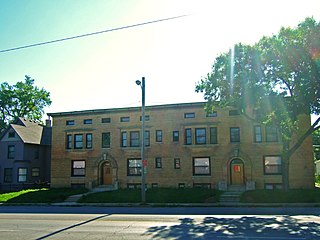
Kromer Flats, also known as the Drummond Apartments, is a historic building located in Des Moines, Iowa, United States. This 2½-story, brick structure was completed in 1905. It features Renaissance Revival design elements, a flat roof, orange-yellow brick, cast concrete trim, four oriel windows on the main facade, two level porches in the rear, a two-story bay on both the north and south elevations, and three air shafts that penetrate the buildings from the rear. It originally had four apartments on each floor. The building is located on Sixth Avenue, which by the turn of the 20th century had become a major route utilized by vehicular traffic and streetcar lines. Its proximity to this transportation corridor illustrates the emergence of higher and denser residential use in this area of Des Moines. It is also significant for its association with the Des Moines architectural firm of Liebbe, Nourse & Rasmussen who designed it. The apartment building was listed on the National Register of Historic Places in 1996.
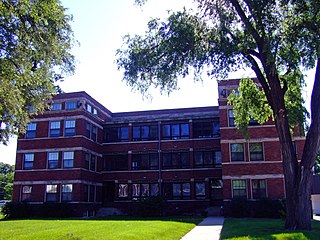
The Maine is a historic building located in Des Moines, Iowa, United States. This three-story, brick structure was completed in 1913. It features 18 units, an "H" plan, a series of ribbon windows, stone lintels and decorative stone trimming. At the rear of the property is a two-story brick automobile garage that shares the historic designation with the apartment building. The date of its construction is uncertain. The building is located on Sixth Avenue, which by the turn of the 20th century had become a major route utilized by vehicular traffic and streetcar lines. Its proximity to this transportation corridor illustrates the emergence of higher and denser residential use in this area of Des Moines. The apartment building and garage were listed together on the National Register of Historic Places in 1996.

The New Lawn is a historic building located in Des Moines, Iowa, United States. This three-story, brick structure was completed in 1915. It features seven units, an U-shaped plan, a symmetrical facade with projecting wings, polychrome brick veneer, a series of quadruple ribbon windows, and a flat roof. The building is located on Sixth Avenue, which by the turn of the 20th century had become a major route utilized by vehicular traffic and streetcar lines. Its proximity to this transportation corridor illustrates the emergence of higher and denser residential use in this area of Des Moines. The apartment building was listed on the National Register of Historic Places in 1996.

The Norman Apartment Building is a historic building located in Des Moines, Iowa, United States. This three-story brick structure was the first of five apartment buildings, housing 60 families, that Drake University planned to build near its campus. They would be controlled by the university's board of trustees. The Norman and the more modest McCoy Apartments were the only two buildings constructed. The building features two shades of tan brick, a considerable amount of Gothic Revival limestone trim, a Tudor arched entry, medieval lettering on a name plaque between the second and third floors, and ogee arches on some windows. The building's significance is related to the "University's growth and development and the effect its financial policies had on nearby settlement." It is also significant for its association with the prominent Des Moines architectural firm of Proudfoot & Bird who designed it. The building was listed on the National Register of Historic Places in 1988.

The Priester Building is a historic building located just north of Downtown Davenport, Iowa, United States. The low-rise office building was built for the headquarters of Priester Construction Company in 1959. The L-shaped structure offers "a strong essay in the International Style." It rises three-stories to the height of 39.29 feet (11.98 m). It was listed on the National Register of Historic Places in 2017. A plan has been developed by Newbury Living of West Des Moines, Iowa to convert the building from office space into a 33-unit apartment building.

The Argonne Building is a historic building located in Des Moines, Iowa, United States. It was built in 1919 and it was used as a showroom for the Ford automobile plant that was located across the street and for employee housing. In later years it served as a long-term hotel and as an apartment building for low-income renters. There are plans to convert most of the building into market-rate apartments and to maintain the commercial space on the main level. The building was listed on the National Register of Historic Places in 2020.























